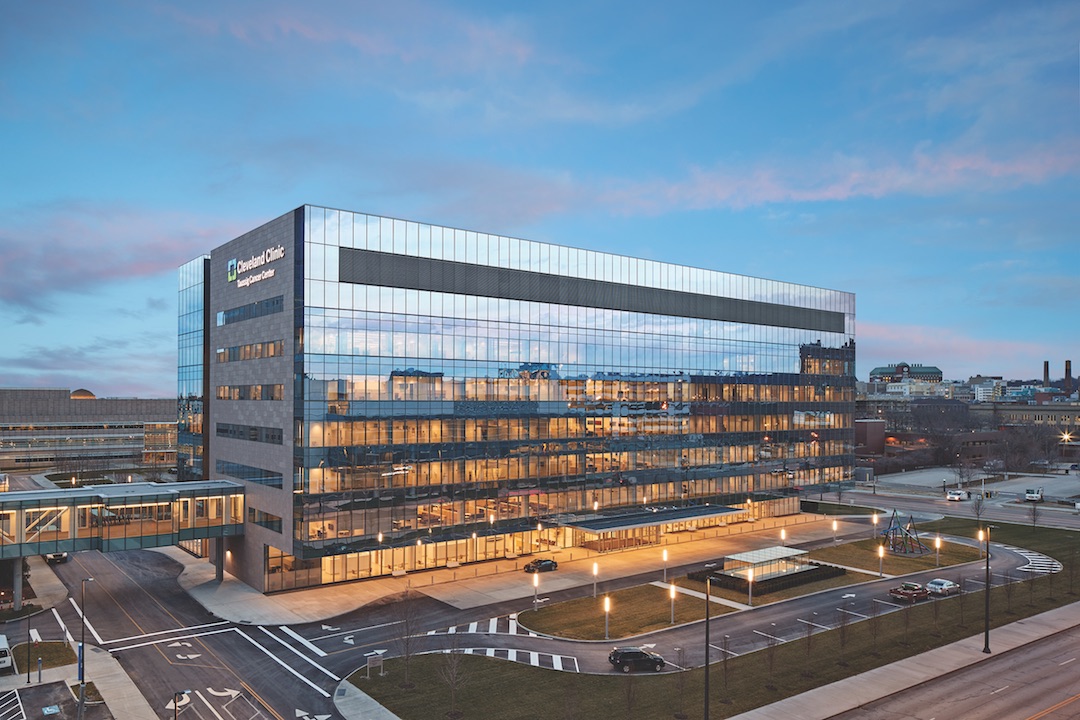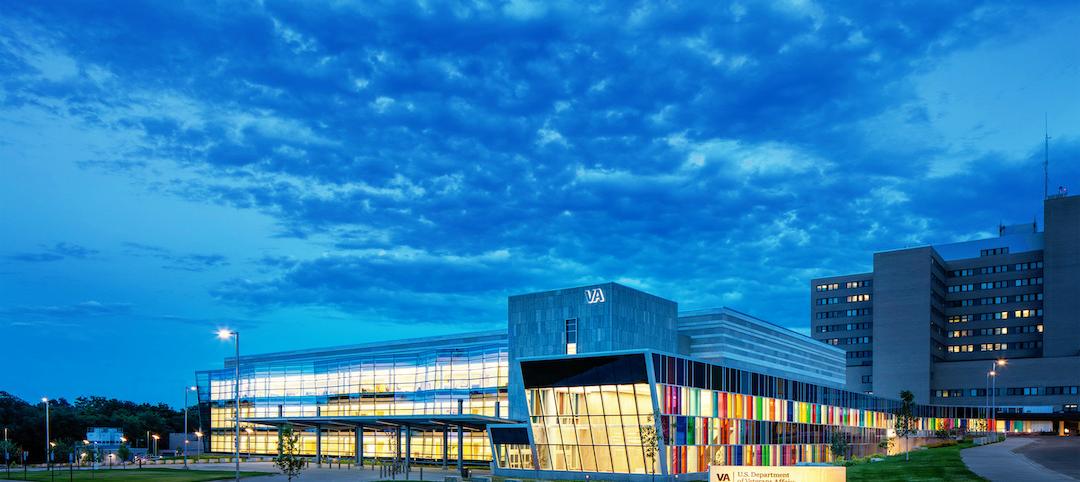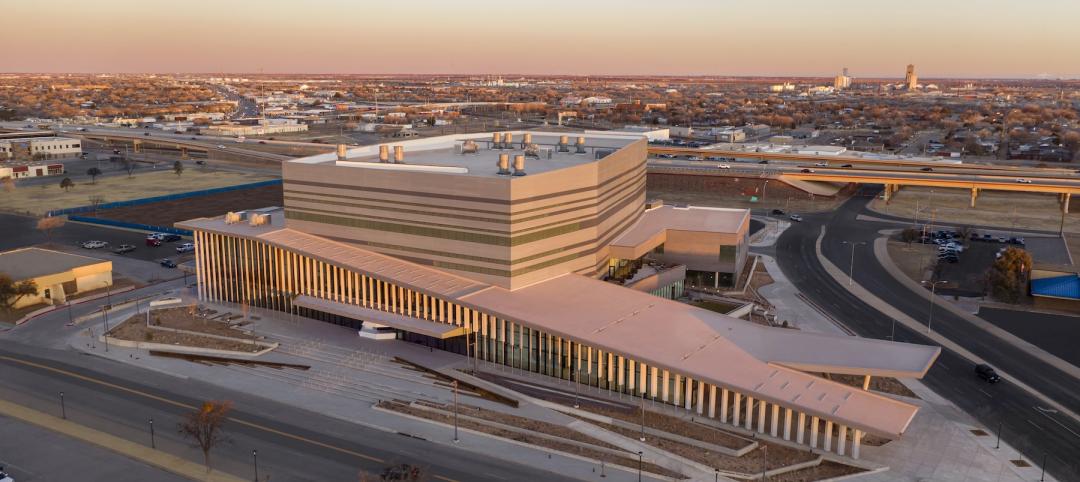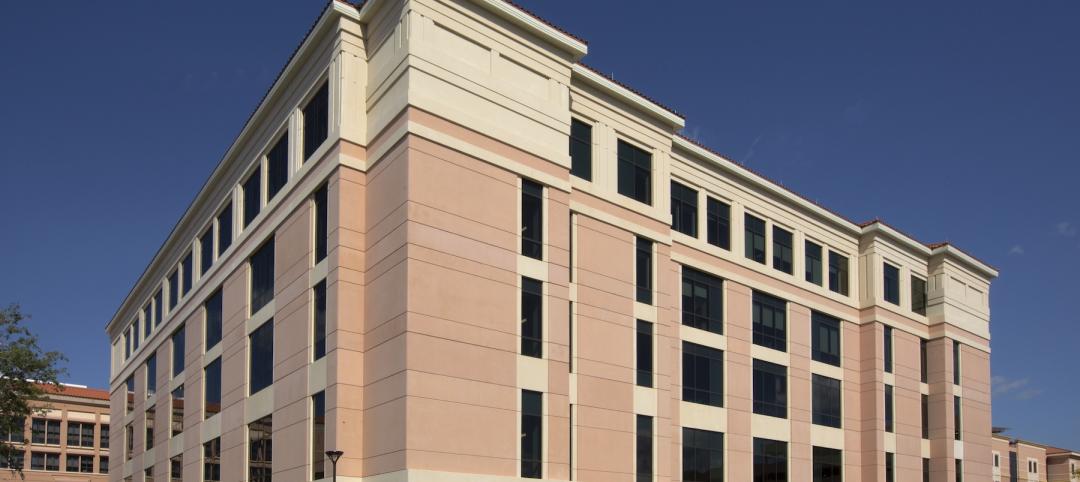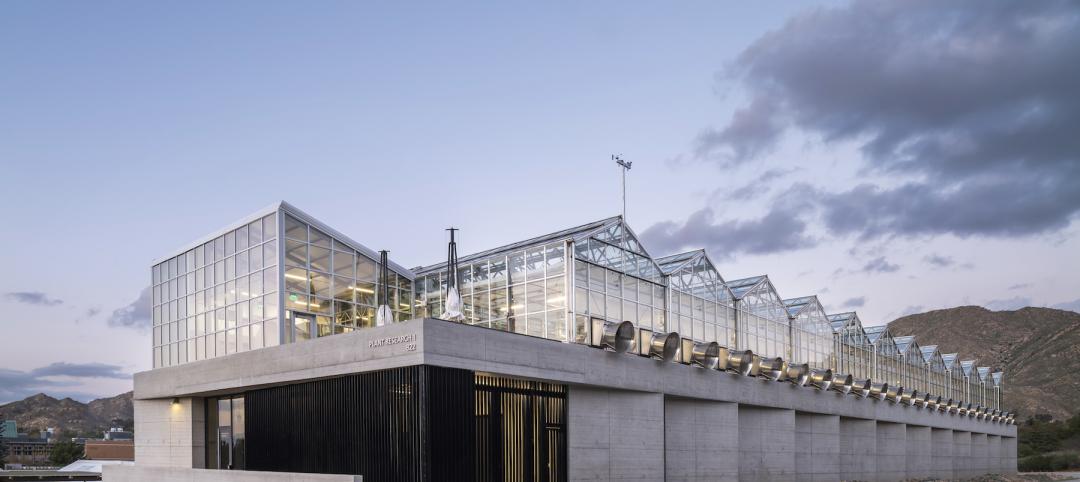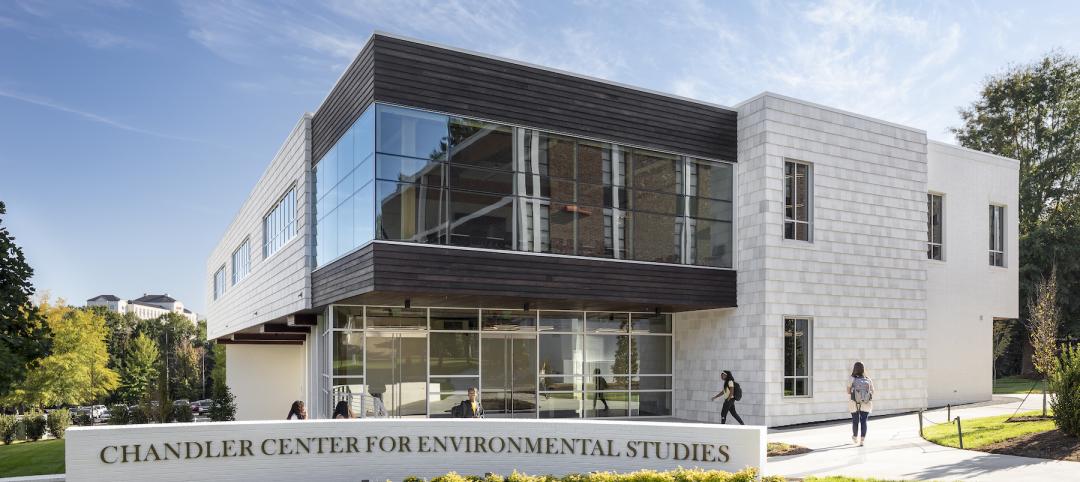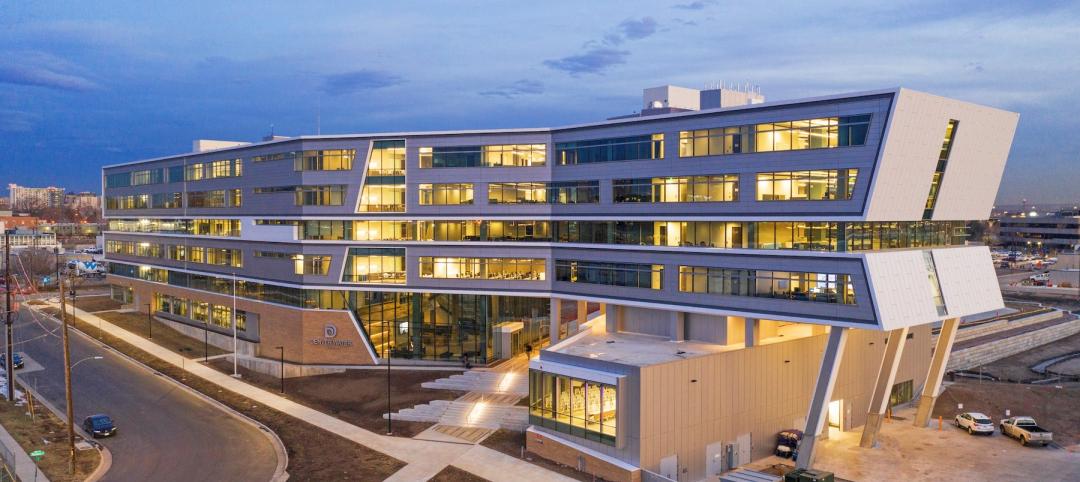The design of the Cleveland Clinic Taussig Cancer Center was developed with one main guiding principle: optimize patient treatment and provide multidisciplinary care for them under one roof. The new 390,220-sf facility condensed the cancer services into one efficient building while improving the overall treatment process for both the patients and their families.
The healthcare facility’s project team adopted the Cleveland Clinic’s Owner-Controlled Team Project Delivery Method (OCTPD) to complete the project on time and under budget. OCTPD is Cleveland Clinic’s practice model of project delivery where the owner provides the knowledge and leadership to lead a team of industry experts to define and deliver a project by maximizing the benefits of coordinated teamwork.
The resulting seven-story, patient-first facility includes 126 exam rooms, 98 infusion bays, diagnostic imaging and genetics/genomics testing, dedicated areas for clinical trials, and 176 physician offices with support and conference areas.
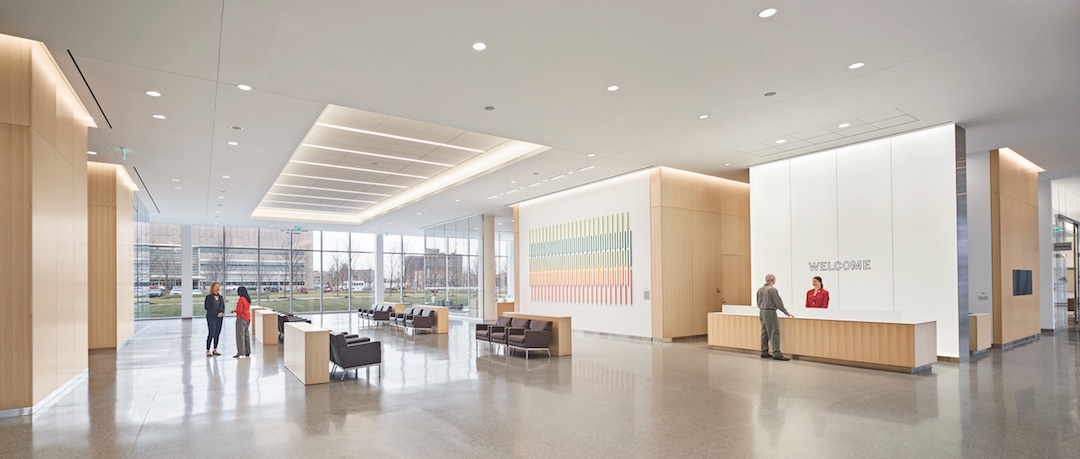 Robert Benson Photography.
Robert Benson Photography.
Natural light pierces the building from every angle, but the project team determined it was especially important for patient treatment areas to form a connection to nature. In the lower level radiation oncology treatment floor, high ceilings were used to bring in more light to the lower level and a large skylight structure allows daylight to pour in from above. Floors two through four are tabbed for infusion treatment with exam rooms and infusion bays that are all aligned along the north elevation to provide exterior views across the landscaped campus spine. Infusion patients may be in treatment for up to six hours, so providing this connection to nature with wide-open views was especially important.
The first floor focuses on support services that include a private cancer hematology lab, a wellness center with reflexology and massage therapies, art and music therapy, a retail pharmacy, a boutique where patients can get assistance with wigs, prosthetics, and makeup, a resource center, and a meditation space. Administrative offices are located on floors five and six and also include bountiful natural light.
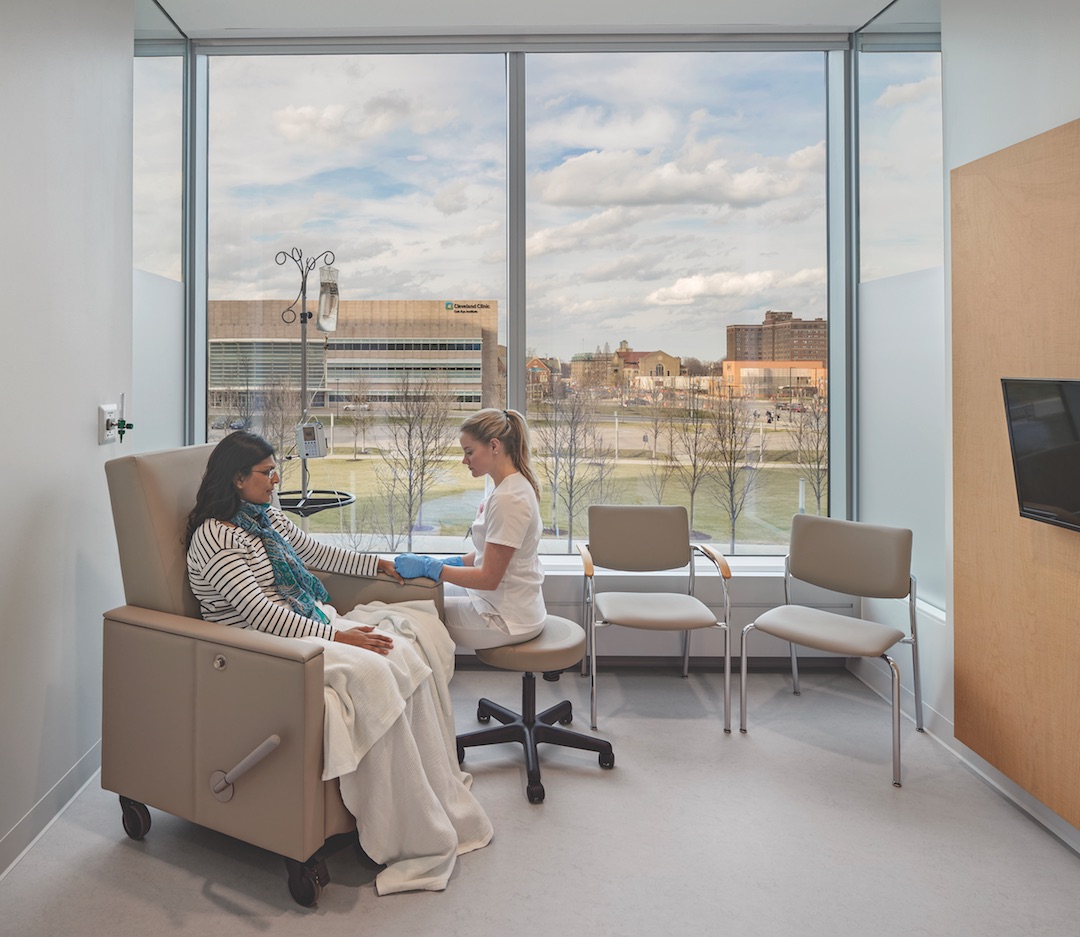 The infusion treatment exam rooms and infusion bays are aligned along the north elevation to provide exterior views across the landscaped campus spine. Robert Benson Photography.
The infusion treatment exam rooms and infusion bays are aligned along the north elevation to provide exterior views across the landscaped campus spine. Robert Benson Photography.
The steel-framed building uses composite floor slabs supported by a mat foundation. The building envelope consists of a unitized aluminum curtain wall with glass and granite panels. A 30-foot slab cantilevers out over the entire 350-foot span of the south façade and main entry.
Prefabrication methods were used to improve quality, enhance the schedule, and reduce the cost of the project. The MEP engineer set up a prefabrication warehouse a few miles from the project site where a significant portion of the above-ceiling MEP racks were built before being transferred to the site and installed.
BIM played a critical role in the project. A preliminary model was used during pre-construction to help inform the estimating effort as the design’s costs were being established. When design-assist contractors for mechanical, electrical, and fire protection were selected, they immediately began working with the design team to evaluate the early MEPFP models for cost and constructability. A common cloud-based server housed all the current models so any team member could see any other partner’s current model and perform “clash tests” between the models.
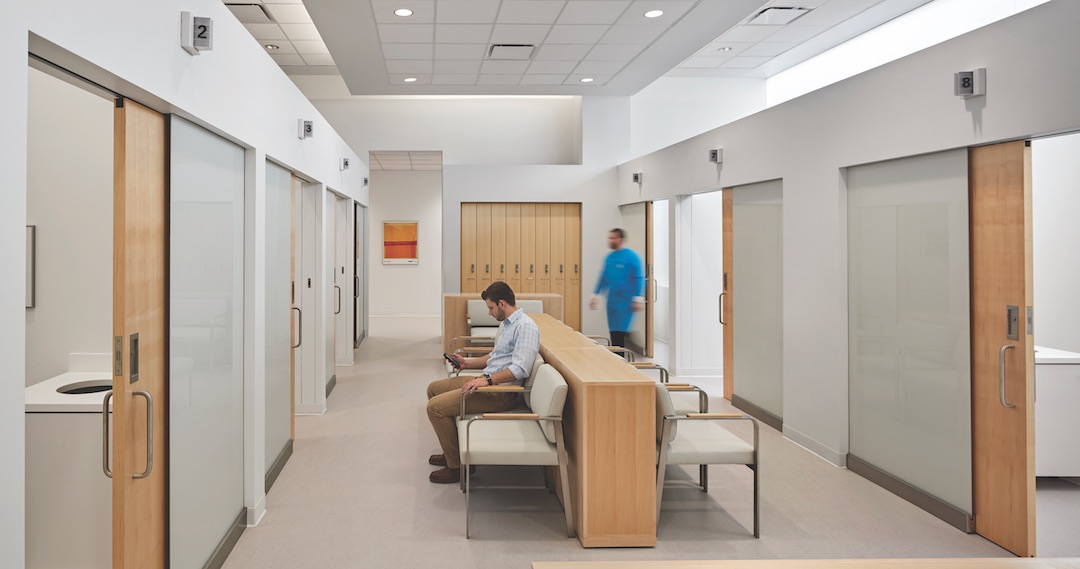 Changing room. Robert Benson Photography.
Changing room. Robert Benson Photography.
As each member of the team modeled their support system, they also modeled the hangers used to support them. This allowed the team to map the coordinates of the hangers and install them prior to the pouring of the concrete floors. Not only was the installation safer and faster, it also ensured 100% compliance with the approved model/design and eliminated any clashes in the field. Additionally, simple mockups created from tape and cardboard helped to ensure efficient room layout for users to provide the best care possible. These mockups helped save about $1.5 million from future user change requests.
Overall, the project team achieved substantial completion of the building on the same day identified 27 months earlier at ground breaking. The final construction cost resulted in an overall savings to the owner of $21 million, $17 million of which was directly attributed to the collaborative efforts of the design and construction team.
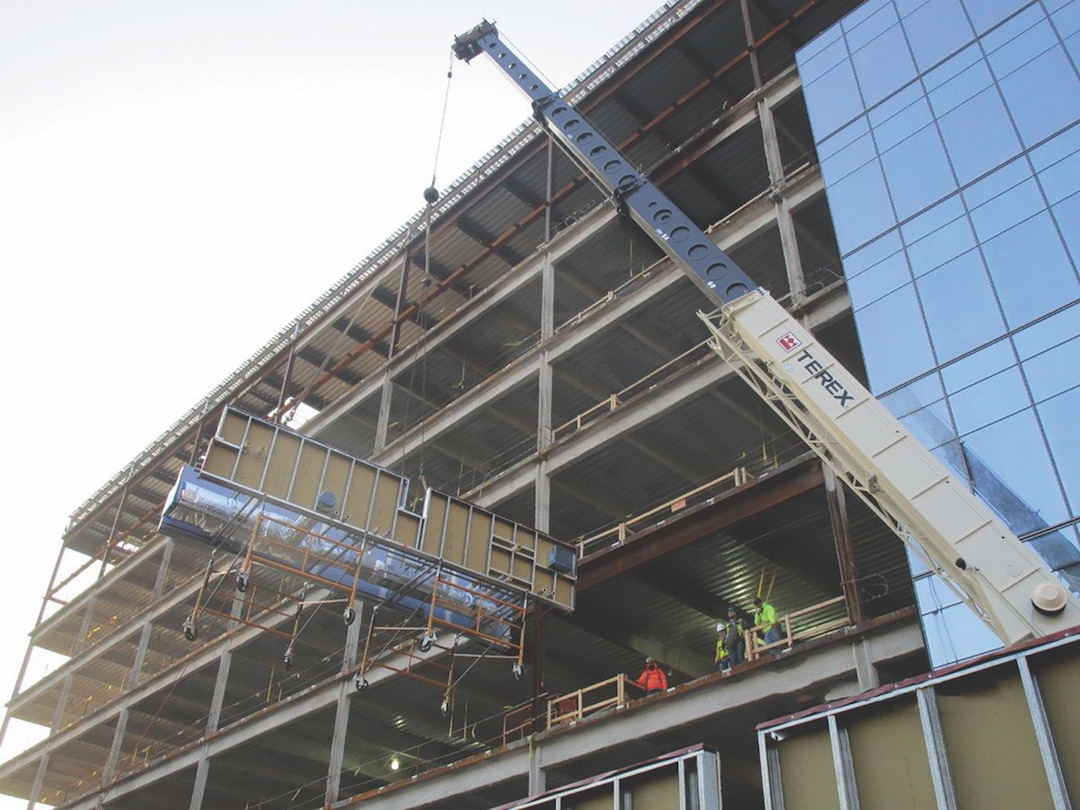 The team employed prefabrication techniques, including MEP trade racks, to improve quality, enhance the schedule, and reduce costs.
The team employed prefabrication techniques, including MEP trade racks, to improve quality, enhance the schedule, and reduce costs.
Building Team — Submitting firm, general contractor Turner Construction Company Owner Cleveland Clinic Architect William Rawn Associates Architect of record Stantec Structural engineer LeMessurier Consultants MEP engineer Bard, Rao + Athanas Consulting Engineers
General Information — Size 380,000 sf Construction cost $190 million Construction time September 2014 to June 2017 Delivery method CM at risk
Return to the 2018 Building Team Awards Landing Page
Related Stories
| Aug 29, 2022
Montana becomes first U.S. state to approve 3D printing in construction
Montana is the first U.S. state to give broad regulatory approval for 3D printing in building construction.
Architects | Apr 22, 2022
Top 10 green building projects for 2022
The American Institute of Architects' Committee on the Environment (COTE) has announced its COTE Top Ten Awards for significant achievements in advancing climate action.
Concrete Technology | Apr 19, 2022
SGH’s Applied Science & Research Center achieves ISO 17025 accreditation for concrete testing procedures
Simpson Gumpertz & Heger’s (SGH) Applied Science & Research Center recently received ISO/IEC17025 accreditation from the American Association for Laboratory Accreditation (A2LA) for several concrete testing methods.
2021 Building Team Awards | Jan 14, 2022
First public-private partnership project in Veterans Administration history saves $34 million in costs
LEO A DALY and McCarthy Building Companies head the project team for the Omaha VA Ambulatory Care Center in BD+C’s 2021 Building Team Awards.
Building Team Awards | Dec 8, 2021
A performing arts center celebrates a legendary rocker and his birthplace
Buddy Holly Hall in Texas receives BD+C’s Silver Building Team Award.
Building Team Awards | Dec 7, 2021
A rapid response to a health emergency
Baptist Hospital of Miami’s 233-bed Hope Tower receives BD+C’s Bronze Building Team Award
Building Team Awards | Dec 3, 2021
Putting science on display, thanks to a design-build approach
UC Riverside’s Plant Growth Environments Facility receives BD+C’s Bronze Building Team Award.
Building Team Awards | Dec 2, 2021
An academic ‘precinct’ brings arts and sciences together
Wofford College’s Chandler Center for Environmental Studies receives BD+C’s Silver Building Team Award.
Building Team Awards | Dec 1, 2021
Denver sets the bar for water reclamation and reuse
A new administration building for the city’s water utility company scores Platinum in BD+C’s 2021 Building Team Awards.
2021 Building Team Awards | Nov 17, 2021
Caltech's new neuroscience building unites scientists, engineers to master the human brain
The Tianqiao and Chrissy Chen Institute for Neuroscience at the California Institute of Technology in Pasadena wins a Gold Award in BD+C's 2021 Building Team Awards.


